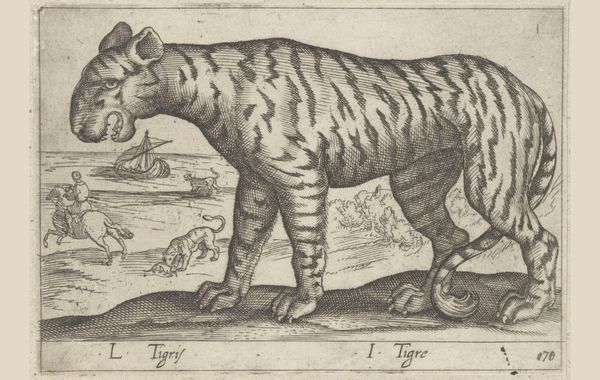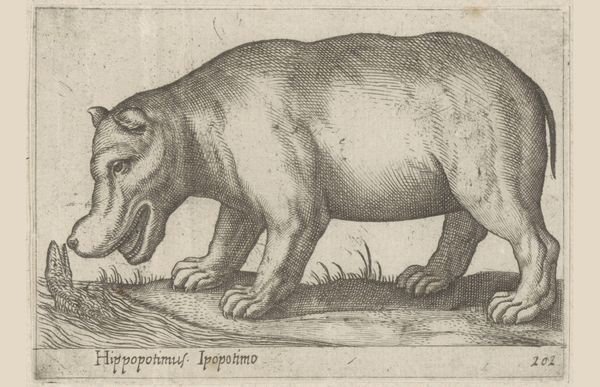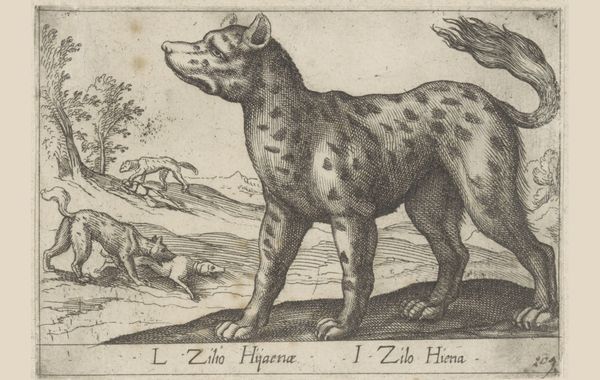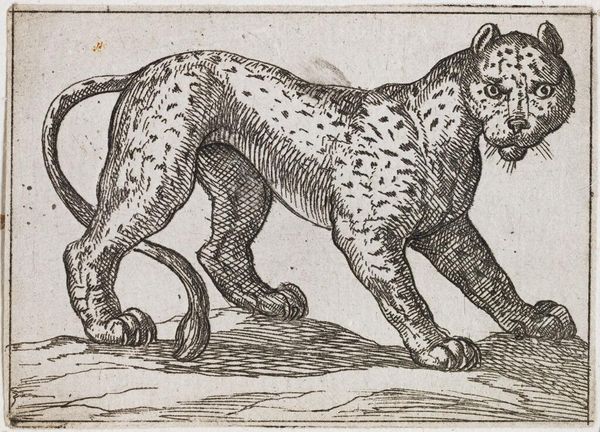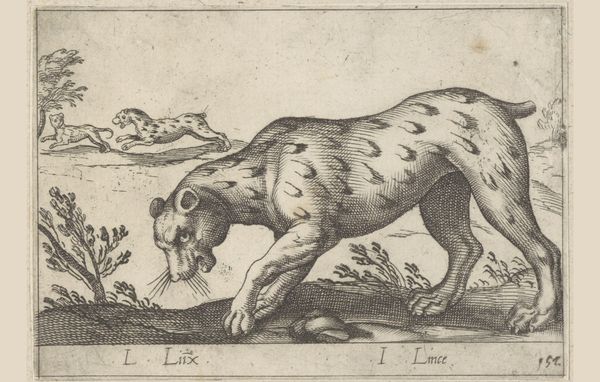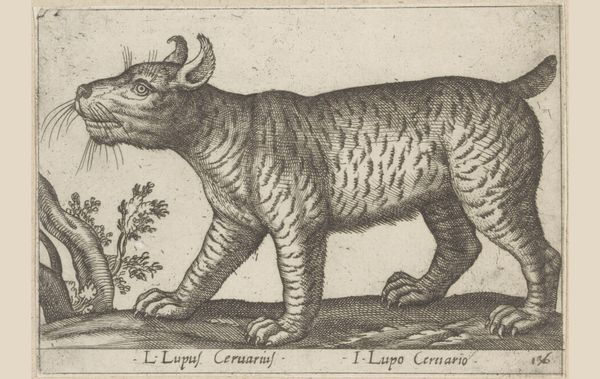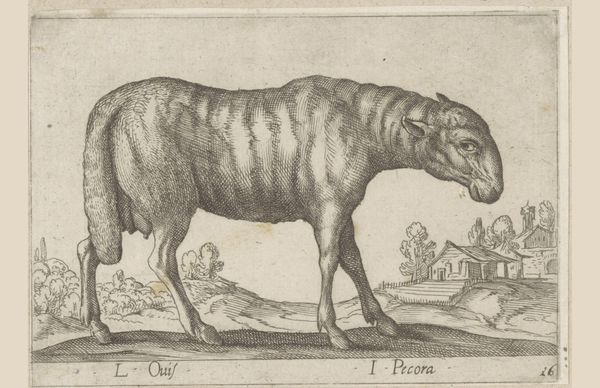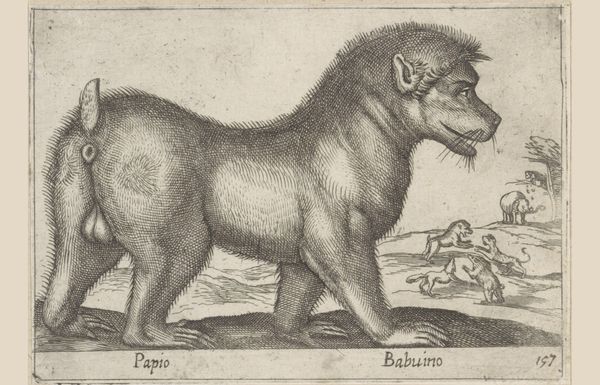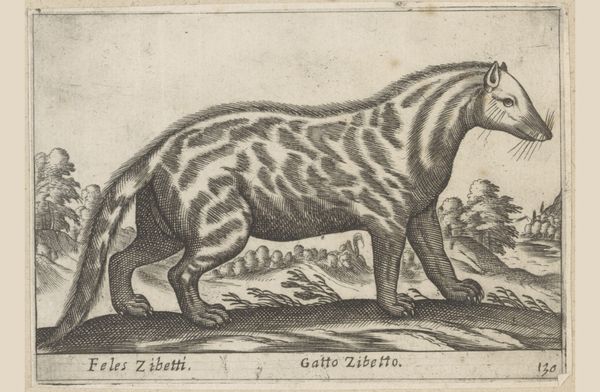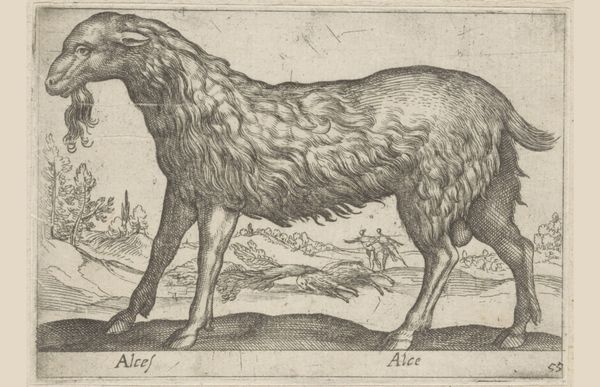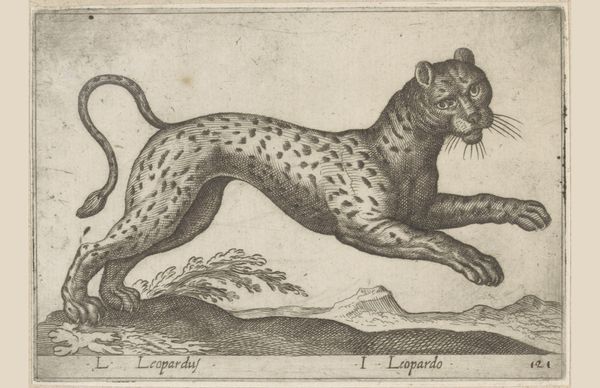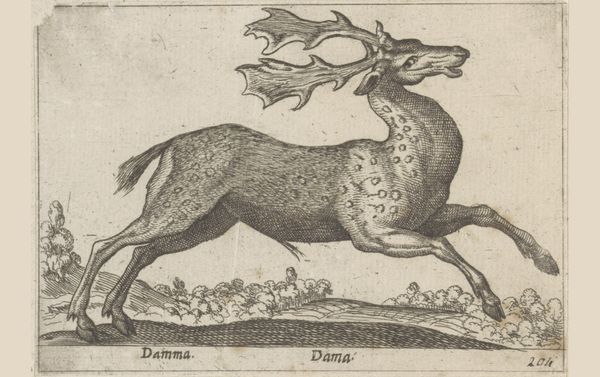
print, engraving
#
baroque
#
animal
# print
#
landscape
#
figuration
#
line
#
engraving
Dimensions: height 95 mm, width 137 mm
Copyright: Rijks Museum: Open Domain
This print of a tiger was made by Antonio Tempesta, likely around the turn of the 17th century, using etching. The process involves coating a copper plate with wax, drawing into the wax to expose the metal, and then bathing the plate in acid. This bites into the metal, leaving behind an image that can be inked and printed. Look closely, and you’ll notice the material quality of the print: the crisp lines, the subtle gradations of tone, and the texture of the paper. But consider how this process would have been understood in Tempesta’s time. Printmaking was closely tied to wider social issues of labor and politics. It allowed for the relatively quick reproduction of images, fueling both the spread of knowledge, and artistic celebrity. The image is a bizarre mix of observation and fantasy, likely based on second-hand descriptions and the kind of free play of imagination that printmaking encouraged. Ultimately, this print is a reminder that materials, making, and context are vital to fully understand an artwork, challenging any simple division between the fine and applied arts.
Comments
No comments
Be the first to comment and join the conversation on the ultimate creative platform.
